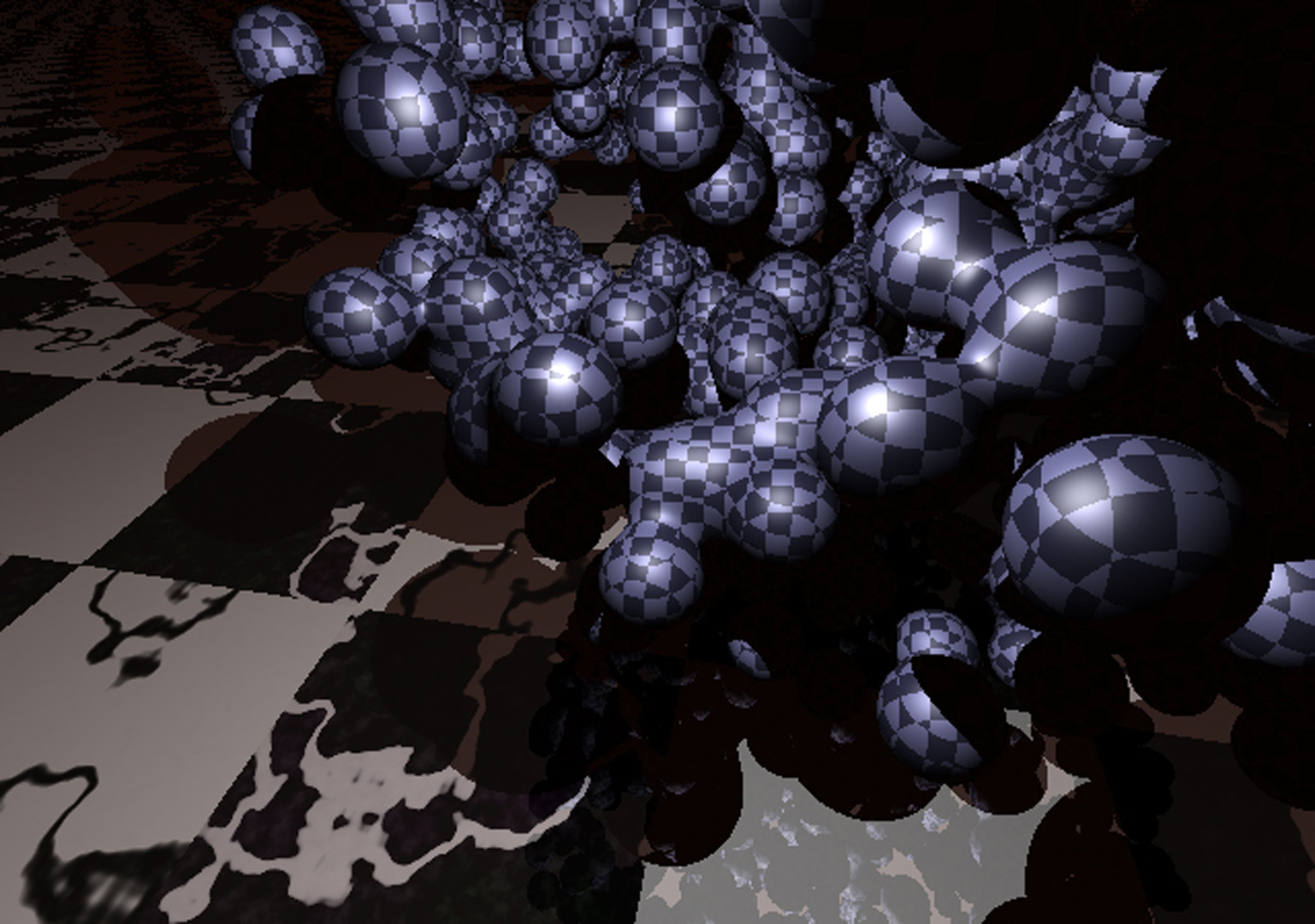“BVH for efficient raytracing of dynamic metaballs on GPU”
Conference:
Title:
- BVH for efficient raytracing of dynamic metaballs on GPU
Session/Category Title: Real Fast Rendering
Presenter(s)/Author(s):
Abstract:
Metaballs [Bloomenthal 1997] are effective to represent fluids and similar complex and deformable geometries, but their implicit nature makes difficult their visualization in real time. A common strategy is to tessellate the resulting isosurface and to render it on GPU, but it scales poorly as the number of metaballs increases. Kanamori et al. [2008] efficiently raycast thousands of metaballs without intermediate representations. Their method assumes that rays are shot from a single viewpoint, thus preventing secondary effects (no shadows, reflections, etc.), and is limited to polynomial density functions. We propose to exploit the culling capacity of dynamic bounding volume hierarchies (BVH) [Wald 2007], the secant method for ray-surface intersection, and CPU-GPU parallelism to alleviate the restrictions of their method. This results in a general raytracing method, allowing arbitrary ray intersection (visibility, shadow, reflection, refraction, etc.) with metaballs of any finite-support at interactive performances.
References:
1. Bloomenthal, J. 1997. Introduction to Implicit Surfaces. Morgan Kaufmann, August.
2. Kanamori, Y., Szego, Z., and Nishita, T. 2008. GPU-based fast ray casting for a large number of metaballs. In Eurographics.
3. Wald, I. 2007. On fast construction of SAH based bounding volume hierarchies. In Symposium on Interactive Ray Tracing.





